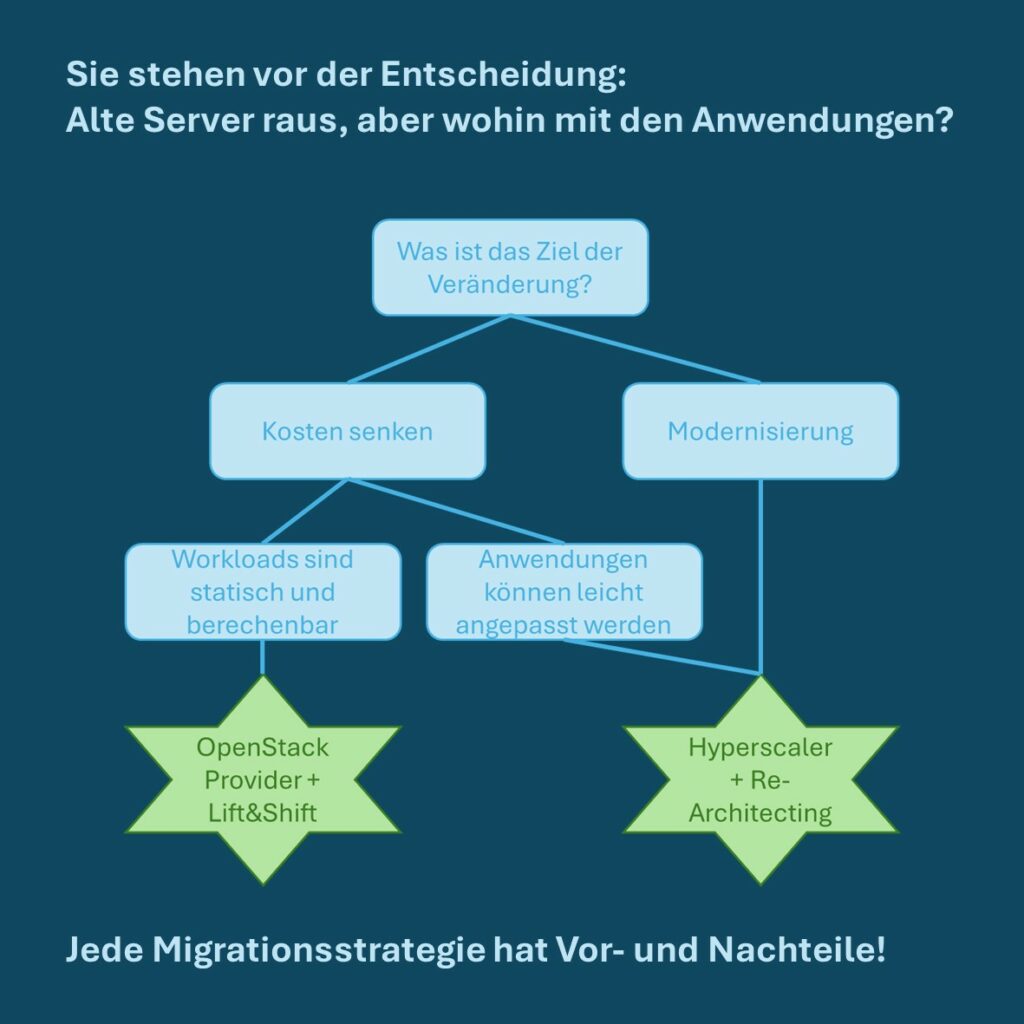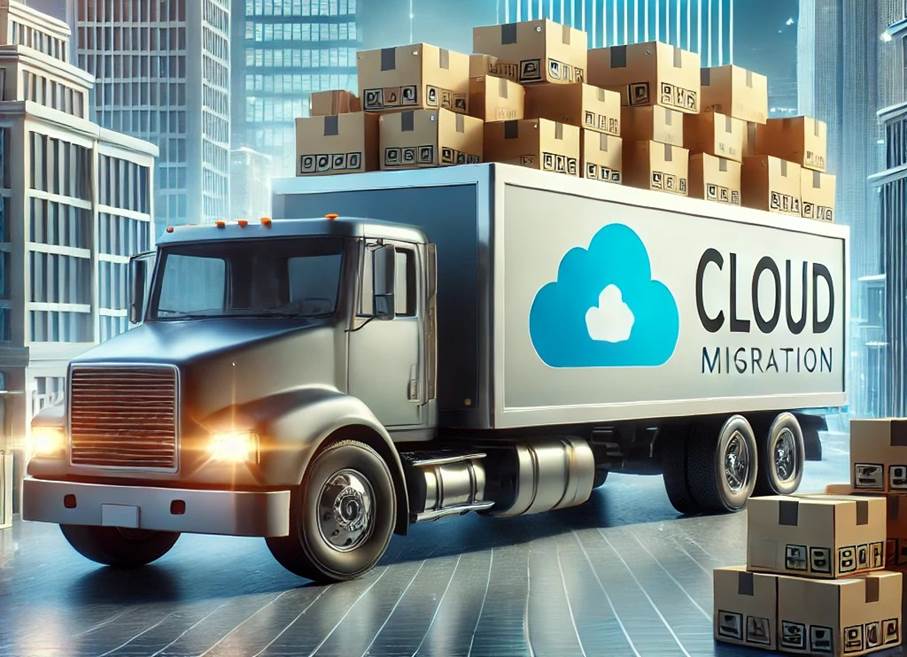Is Lift & Shift simply an expensive problem shift?
Companies today are faced with the decision: Replace old servers or migrate to the cloud? The promises are tempting, but if you simply move your existing systems one-to-one to a hyperscaler such as AWS, Azure or Google Cloud, you run the risk of continuing to run the problems of your own data center at a higher cost.
A successful cloud migration is rarely just a question of technology, it is a strategic decision. And as with any strategic decision, there is more than just one right path.

Scenario 1: Lift & shift to a hyperscaler
The existing servers are moved to the cloud unchanged. Applications, operating systems and architectures remain as they are.
Main problems:
- High operating costs: In the classic instance approach, you pay for the service provided, not just for the capacity actually used. Unused resources quickly drive up the bill.
- Missed cloud benefits: Elasticity, automatic scaling and modern services remain unused, the servers simply continue to run as if they were in their own basement, only on third-party hardware.
- Continuing technical debt: Outdated operating systems, inflexible architectures and security vulnerabilities move with you (possibly with a one-off modernization "boost" during the migration. They may even be more difficult to fix in the new environment.
This model is often the most expensive and technologically unattractive option - especially if the existing processes are already inefficient.
Scenario 2: Cloud-native transformation with a hyperscaler
Applications are modernized before or during the migration. Architecture and processes are adapted so that the cloud can play to its strengths.
Possible measures:
- Refactoring: Code is adapted to enable scaling and flexibility.
- Re-Architecting: New development or redesign, e.g. through microservices or event-driven design.
- Use of modern cloud services: Serverless computing (e.g. AWS Lambda), container orchestration (Docker, Kubernetes), managed databases (e.g. Amazon RDS).
Advantages:
- Flexible scaling and needs-based resource utilization.
- Faster introduction of new technologies and innovations.
- Relieving the internal IT team of infrastructure tasks.
The effort involved is higher, but the cloud is turning from a pure hosting service into a driver of innovation.
Scenario 3: Pragmatic lift & shift to a managed hosting provider (OpenStack)
Migration to a specialized provider that provides dedicated or virtual servers at fixed, often more favorable conditions, usually with OpenStack as the basis.
Advantages:
- Cost savings: Modern rental servers are more energy-efficient and often significantly cheaper than outdated on-premises hardware or hyperscaler instances.
- Simple conversion: Applications can continue to operate almost unchanged.
- Transparent pricing models: Often including generous traffic volumes, which prevents unexpected costs.
Limits:
- Less flexibility for short-term scaling.
- Slower pace of innovation compared to hyperscalers.
- Limited choice of specialized services.
A very sensible interim solution for companies with stable workloads that want or need to modernize their infrastructure quickly and cost-effectively without immediately making far-reaching changes to the software.
There is no single, universally correct path to the cloud.
- If you want to modernize complex processes and solve IT problems permanently, you should consider a cloud-native transformation with a hyperscaler.
- Those who primarily want to reduce costs and are not planning any major changes to the applications are often better off with a specialized OpenStack provider.
- A naïve lift & shift to a hyperscaler, on the other hand, rarely makes sense; the costs are too high and the benefits too small.
The most important insight: Technology follows strategy, not the other way around.
A neutral analysis of your own IT landscape, workloads and business goals is the first step. Only when it is clear what you want to achieve can you choose the right path, whether hyperscaler, managed hosting or a hybrid approach.
Ultimately, it's not about servers or clouds, but about turning IT from a cost block into a flexible driver of business.
Cloud migration is just one part of our day-to-day work and it is precisely these experiences that we want to share in our blog. If you want to find out more about how we use technologies, overcome challenges and develop solutions together, take a look at our other posts, e.g. on our practical experiences in the Use of OpenStack in customer projects. Maybe you'll find just the inspiration you need there.


